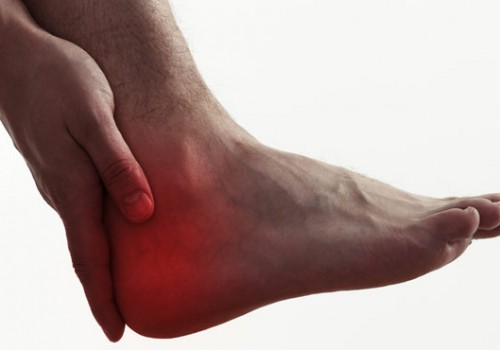Plantar faciitis is the inflammation of the ligament that attaches from the ball of the foot to the heel bone. This strong and tight tissue supports the arch of the foot. It is also one of the major transmitters of weight across the foot as you walk or run. Therefore, the stress placed on this tissue is tremendous. Heel spurs are the deposits of calcium that form when the plantar fascia pulls away from the heel area, causing a bony protrusion, or heel spur to develop.
Treatment of heel spurs is the same as treatment of plantar fasciitis.
Symptoms
- Pain with the first step in the morning, some relief following activity, but returning after extended amounts of time standing or walking.
- Pain may start as a dull pain in the heel and the arch and may later accentuate to a sharp, persisting pain.
- Sharp pain in the inside part of the bottom of your heel or foot.
- Heel pain that tends to be worse with the first few steps after awakening, when climbing stairs or when standing on tiptoe.
- Heel pain after long periods of standing or after getting up from a seated position.
- Heel pain after, but not usually during, exercise.
- Mild swelling in your heel
Treatments
- Medication
- Injection Therapy
- Exercise
- Custom Orthotics
- ESWT (Extracorporeal Shock Wave Therapy)
ESWT
Extracorporeal Shock Wave Therapy is a non invasive treatment that involves the delivery of sound energy or shock waves to the tissue that is affected by plantar fasciitis initiating a healing response by the body. This healing response causes increased delivery of nutrients to the affected area. The microtrauma is thought to stimulate a repair process and relieve the symptoms of plantar fasciitis.
If all conservative, non-surgical treatments have failed, then surgery may be indicated for you. The Endoscopic Plantar Fasciotomy technique is a minimally invasive endoscopic technique, which releases a portion of the tight plantar fascia. This new method uses an endoscope which is a small instrument that allows the surgeon to see “anatomy” inside the body. By using a very small incision, less than 1/2 inch, the new procedure releases the extreme tension on the plantar fascia which is the cause of the pain in the majority of cases.

